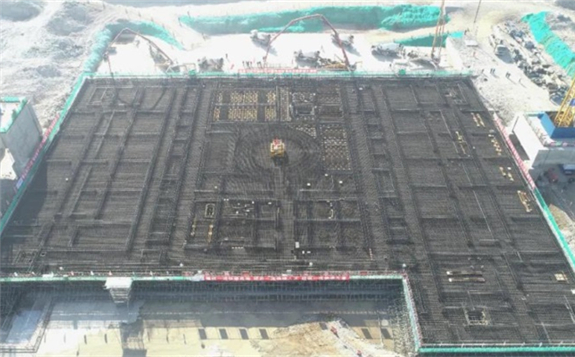Construction work has started on the second CFR-600 sodium-cooled pool-type fast-neutron nuclear reactor in Xiapu County, in China's Fujian province. Also known as the Xiapu fast reactor demonstration project, the CFR-600 is part of China's plan to achieve a closed nuclear fuel cycle.

Construction of unit 1 started in late 2017. The fuel will be supplied by TVEL, a subsidiary of Russia's Rosatom, according to an agreement signed in 2019 with CNLY, which is part of China National Nuclear Corporation (CNNC).
CNNC has announced that construction of unit 2 started on 27 December, adding that excavation work at the site had begun exactly a year before. Since then, "the scale of engineering work, tight schedule, construction difficulties and other adverse conditions" were all overcome to achieve the target as planned, it said.
"All the construction workers will continue to do a good job with the demonstration fast reactor project in order to achieve the historical mission of the [Communist] Party to achieve China's historic transformation into a nuclear industrial power making an ever greater contribution!"
China's research and development on fast neutron reactors started in 1964. A 65 MWt fast neutron reactor - the Chinese Experimental Fast Reactor (CEFR) - was designed by 2003 and built near Beijing by Russia's OKBM Afrikantov in collaboration with OKB Gidropress, NIKIET and the Kurchatov Institute. It achieved first criticality in July 2010, can generate 20 MWe and was grid connected in July 2011. Core height is 45 cm, and it has 150 kg Pu (98 kg Pu-239). Temperature reactivity and power reactivity are both negative.
The CFR-600 demonstration fast reactors (CDFR) are the next step in China Institute of Atomic Energy's (CIAE) programme. Xiapu 1 is expected to be grid connected in 2023. The reactors will be 1500 MWt, 600 MWe, with 41% thermal efficiency, using MOX fuel with 100 GWd/t burn-up, and with two sodium coolant loops producing steam at 480°C. Later fuel will be metal with burn-up 100-120 GWd/t. Breeding ratio is about 1.1, design operational lifetime 40 years. The design has active and passive shutdown systems and passive decay heat removal.